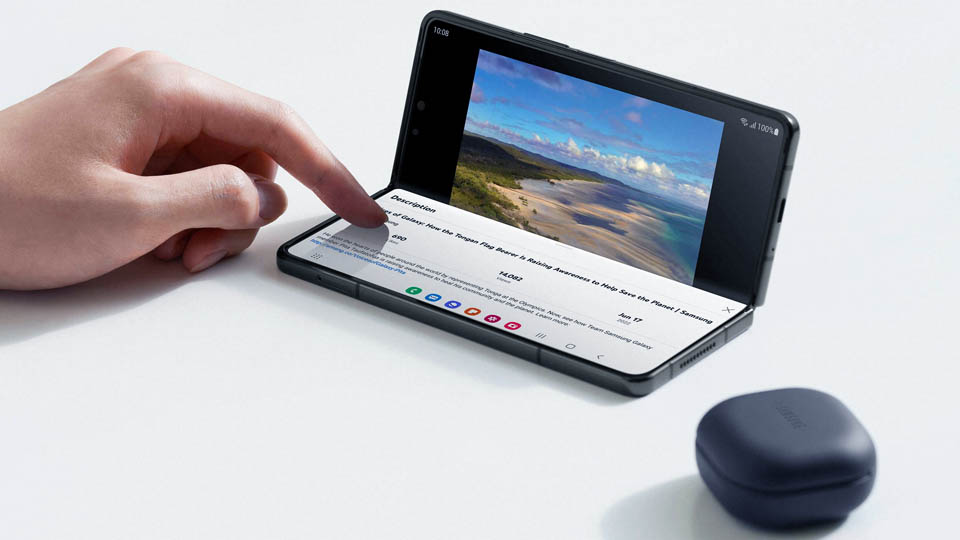What about modern phones, though? How will they fare in comparison to their forerunners? What will change most significantly? And what are the principal difficulties?
Flexible OLED displays

Samsung continues to dominate the market for flexible OLED mobile phones, although LG has made an investment of $905 million in its South Korean manufacturing facility. Will the investment be adequate to offset the high price of flexible OLED in order to meet the growing demand for flexible display products? We must hold off and observe. Even professional paper writing services can’t predict that. In the meanwhile, we can anticipate a decrease in price as more manufacturers begin using flexible OLED.
A clever smartphone that can be folded and unfurled into a tablet is being developed by LG Display. A proposed prototype with a folding display is depicted in patent drawings. The gadget can be opened and shut as needed. The business also created the first 77-inch flexible OLED display in history. It has an Ultra HD resolution, an 80-degree curve, and 40% transparency. The next big thing in mobile phones could be these revolutionary displays.
The primary hurdles in the development of flexible OLEDs for mobile phones are yield management and production costs. However, inflexible glass can be removed with the aid of innovative thin film encapsulation technologies, making flexible displays a possibility. Additionally, manufacturers can produce thin bezels and support complicated fine pattern printing thanks to the capabilities of next-generation TFE printing. With the aid of this innovation, the OLED market will be more quickly accessible to the general public.
Flexible displays will almost probably be a feature of the next generation of smartphones, although the technology is still in its infancy. The technology has been patented by a number of manufacturers, and some of these businesses may even look into licensing agreements with them to make it a reality. If this technology is successful, it will eventually be incorporated into other devices, such as TVs. However, there are still a lot of challenges to be solved before flexible OLED screens in mobile phones can start to pay off.
Rollable screens

We would have more room with a foldable screen. We can use it to play first-person shooter games or watch movies. A phone with a revolving screen might have a significantly larger screen than our existing phones. Additionally, this kind of display can be more immersive. Currently, cellphones are available in silver, white, or black hues. However, the new design can give smartphones a toy-like appearance, and those colors look flat and uninteresting.
Michael Dawson talked about curved smartphones and the future of mobile phones a year ago. Since then, some tech giants, like LG and Samsung last month, have started to release smartphones featuring rollable displays. The first smartphone with a stretchable OLED display was just released by Samsung. Before consumers see a gadget with a stretchy display, just like with any breakthrough technology, some time must pass. Both the final design of these devices and the operation of flexible panels will be intriguing to observe.
Although they are still uncommon, flexible displays are becoming more and more common. The ability to fold and roll displays will become more economical as the need for larger displays rises. Future televisions and tubular devices might potentially adopt the trend of bending displays. Foldable screens might either become the exception or the rule, although this is not yet known.
Not only is a flexible display flexible in the sense that it can be bent, but it is also lighter than glass. Designing truly bendable phones is challenging due to hardware and technical limitations. Rollable screens are the future of mobile phones if we can get over these obstacles.
Voice control
Consumers will find it simpler to personalize the experience on the next generation of mobile phones since they will be able to distinguish between humans and machines. Numerous speech profiles will be recognized by mobile apps, which will then suggest pertinent content or goods. Customers will also be able to make a grocery list using voice applications without having to write it down. Mobile phones may potentially be able to operate automobiles once voice technology gains traction. As a result, customers will spend more time with their loved ones and less time on the go looking up information.
In order to satisfy consumer demand for mobile experiences, marketers must take voice control into account. It's no secret that consumers find voice user interfaces to be convenient, and millennials in particular are open to them. Voice commands will become the newest big thing in mobile technology with a little practice. Voice control is the way to go when looking for a new technology.
Mobile gadgets are getting more and more advanced. Voice recognition is a feature of the most recent mobile phone models. Users may quickly make purchases, play music, and perform other chores with speech integration. Mobile voice control is expected to become a significant advantage in the future with the addition of wearable technology. The trend will only intensify as devices get more advanced. Developers, you need to start incorporating voice control into your programs.
5G

Consumers will benefit from 5G's faster broadband rates and decreased latency compared to 4G. Multiple industries will benefit greatly from this, and it will pave the way for widespread upheaval. By 2021, commercial 5G services will be accessible in more than 1,500 cities across 60 different nations, according to Viavi Solutions. What will 5G technology see next? We'll soon learn.
A speedier connection and enhanced security are made possible by expanding data bandwidth. We'll experience a multitude of advantages as the Internet of Things continues to develop at a rapid pace, making our lives easier overall. Cities will be more effective and economical, and utility corporations will be able to remotely manage and monitor usage. Municipalities and public works departments will be able to set up surveillance cameras more swiftly. Additionally, 5G's reduced latency will make it possible to control large machinery remotely. This will make it possible for technicians to control the equipment from anywhere in the world.
 Xiaomi Mi CC9
Xiaomi Mi CC9  OnePlus 9
OnePlus 9  Realme 5 Pro
Realme 5 Pro  Xiaomi 12S Pro
Xiaomi 12S Pro  Samsung Galaxy S25
Samsung Galaxy S25  HTC One S
HTC One S 

